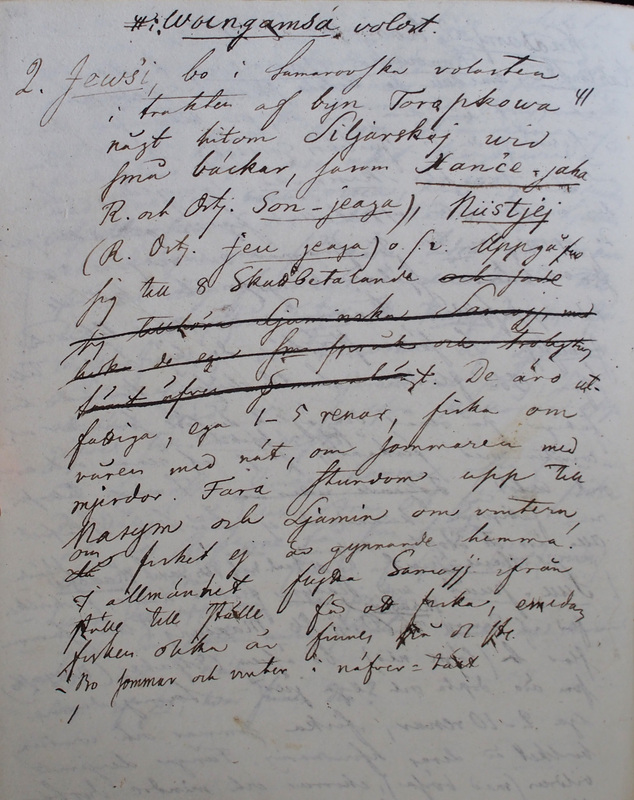Ethnographiska, historiska och statiska anmärkningar. 240
Title
Ethnographiska, historiska och statiska anmärkningar. 240
Description
| 2.
Jewsi,
bo i
Also known as Jiwsi (Verbov), Еуши, Иуси, Юси. It seems the name is first mentioned by Castrén; since then, it has been met in the descriptions and population censuses (Zenʹko-Nemčinova 2006: 17–52).
Samarovska volosten
The Samarovskaja volostʹ, of which the centre is Samarovo, today Chanty-Mansijsk (Ru)/Jomvoš (Khanty)/Abga (Mansi) on the Obˈ at N61°0′10″ E69°1′10″. (TS)
i trakten af byn Toropkowa
Wыngamsá volost Currently Skripunova at N61°19’36’’E69°45’31’’
näst hitom Siljarskoj
widSelijarovo at N61°17′38″ E70°21′5″. (TS)
små bäckar, såsom Hance-jaha (R[yska]. och Ostj[akiska]. Son-jeaga), Niistje (R[yska]. [och] Ostj[akiska]. Jeu jeaga) o. s. v. Uppgå sig till 8 skattbetalande och sade sig tillhöra Ljaminska Samojj., hvka de ega sma språk och trobytning De äro ur- fattiga, ega 1-5 renar, fiska om våren med nät, om sommaren med mjerdor. Fara stundom upp till Nasym och Ljamin om vintern, om fisket ej är gynnande hemma. I allmänhet flytta Samojj.[Samojeder] ifrån ställe till ställe för att fiska, emedan fisken olika år finnes på ol[ika]. stl.[ställen] Bo sommar och vinter i näfver-tält. |
2. The Jewsi live in the Samarov volost' in the vicinity of the village of Toropkowa (Wыngamsá volost) next to Siljarskoj by small streams, such as the Hance-jaha (Russian and Ostyak Son-jeaga), Niistje (Russian and Ostyak Jeu jeaga), etc.
They are really poor, have one to five reindeer, and fish in the spring with nets and in summer with fish traps. Sometimes they go up to the Nasym and Ljamin in the winter if the fishing is not favourable at home. In general, the Samoyeds move from one place to another to fish, because the fish are found in different places in different years. They spend the summers and winters in birch bark tents. |

